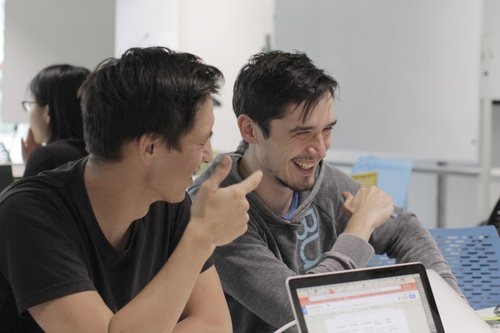The NASA Space Apps Challenge takes us a bit closer to the apogee of things if that is the space. With the technology showcased in the 2017 hackathon, mankind is not just drawn closer to the galaxies, but they are also brought down to within reach.
The codefest named NASA Space Apps Challenge is a competition where amateur programmers are set in groups, with the task of finding solutions to the most pressing issues. Over the years, this has been a conglomeration of the best brains in the bid to solve mankind’s problems.
In the 2017 edition, tech experts, architects, manufacturers, storytellers, designers, and scientists about 15,000 in number came together to handle different problems. Problems like better responses to natural disasters, the menace of invasive species, the increased use of energy and hunger in the world were all looked into.
It’s obvious that the avalanche of data collected by NASA sometimes becomes too massive for it to handle and use. The observation and imagery analytics by EOS Data Analytics is meant to take care of this. Max Polyakov, head of Noosphere Ventures, stated that his organization, as like the National Aeronautics and Space Administration, aim to ensure that more data was made accessible to the layman.
They are well aware of the value of numbers and data in sciences, and the fact that when the volume of data becomes too much, it makes things seem unfeasible. So, individuals are encouraged by Max Polyakov Noosphere to get hold of the data themselves and disseminate it.

Image Credit: Space App Challenge via 2017.spaceappschallenge.org
This is buttressed by the fact that NASA Space Apps Challenge went into collaboration with Davar Ardalan the Director of Storytelling & Engagement at SecondMuse. She is saddled with the task of informing the world about how people are drawn closer to space and local communities affected positively by the app. But this cannot be accomplished without some tools, and they include:
The first is the Launch Simulator developed by the Dream Space Simulator group. In it, the live sensations in a rotating chair are integrated with the visual stimulus gotten from a Virtual Reality headset. In this cheap software, sounds from real launch and rumble packs to make the chair vibrate during the induced takeoffs are included. A custom VR glove was also designed to make it more original. This glove communicates with the virtual objects when it is launched. The telemetry and data used for this were all gotten from NASA, and the end result is that users enjoy a real feeling of what being an astronaut is like, even without sick sacks.
The SPACEGO, consisting of University of Moratuwa, Sri Lanka students accessed telemetry and data from multiple orbiting satellites, and with this, they induced the feeling one can get by running through the earth in thousands of kilometers per hour sitting on a vehicle. While at it, the images that are visible to riders on a satellite will also be visible to users through a camera view. This makes users to see what R2-D2 might see when on such mission, though the real vehicles that run such mission cannot have humans in them.
Team spacer, is a group of developers that came out of the 2017 hackathon that was hosted in Dnipro, Ukraine, where the challenge was supported by Noosphere founded by Max Polyakov. They shifted from the typical designing of tools that make people feel they are in space, to creating a physical space where scientists and designers perform actual work that is similar to the type done on an orbiting spaceship. They did this using 3D printers, augmented reality, and inflatable environments to allow the designers to move around and test their ideas.
This gets them into a seeming astronaut environment that is immersive enough to get them to experience what real astronauts do experience. NASA is not just happy about the advance in technology, but about the information this gives out.





